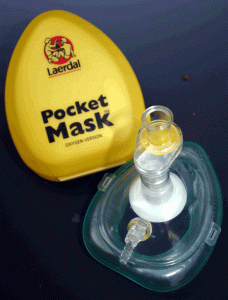PADI Rescue Diver
|
|
What’s involved?You must already hold your PADI Advanced Open Water certification or equivalent in addition to which, you’ll have completed your Emergency First Response (EFR) Course or something similar. (See the Emergency First Response web page) After all, there’s not much point rescuing an unconcious diver from the sea bed and then finding out you don’t know what to do at the surface. You may already have a first aid/CPR qualification from work perhaps. That’ll do nicely. Here at Dive Odyssea, if you complete your EFR and PADI Rescue Diver course together, then we’ll even drop the price for you. There is an element of self study followed by class and pool sessions that you complete in your own time frame. Once we’re both happy there, we then move onto the Open Water phase where we practice those skills before moving on to a full rescue scenario. Skills taught include dealing with tired and panicked divers on the surface and underwater, search patterns, oxygen administration, scene management, surfacing the unconscious diver and in water resuscitation. The emphasis like all PADI courses, is not only to give you the skills, but to give you the confidence in your own abilities. That’s why there’s no time frame for this. You’re ready when you feel you’re ready! Any other options?Of course there are. We always have options in life. If time constraints are a problem, instead of coming along to us for your self study and classroom sessions, why not complete the PADI eLearning course at home or in the office? That way you can complete all your academic studies on line in your own time and then come to us for pool practice andthe open water dives. You can find details and sign up for your PADI eLearning materials here. (NB: the cost quoted on the PADI website is for the training materials only: call us to find out the cost of the diving element of the course) |


 This course is often described by our students as one of the most rewarding and fun courses you will ever sign up to. If you’re looking to complete your PADI Rescue Diver Course, the chances are that you’ve got quite a few dives already logged but you’re at the stage where you would like to feel that bit more self reliant as a diver. You already know that the chances of an incident happening are rare but of course they do happen once in a while. You’re pretty happy with your own dive skills but at the same time you know that accidents can happen and it would be handy to have the skills to deal with it before a drama becomes a crisis! Above all common sense, anticipation and good judgement are key to the Rescue divers success.
This course is often described by our students as one of the most rewarding and fun courses you will ever sign up to. If you’re looking to complete your PADI Rescue Diver Course, the chances are that you’ve got quite a few dives already logged but you’re at the stage where you would like to feel that bit more self reliant as a diver. You already know that the chances of an incident happening are rare but of course they do happen once in a while. You’re pretty happy with your own dive skills but at the same time you know that accidents can happen and it would be handy to have the skills to deal with it before a drama becomes a crisis! Above all common sense, anticipation and good judgement are key to the Rescue divers success. What this course won’t do, is to allow you to leap into the nearest telephone box and change into a very fetching matching cape and underpants to go save the world! That’s a bit extreme. The more realistic aim is to give you the necessary training and skills to deal with most diving incidents and, if required, manage them until either Superman or the Professional Emergency Services attend (Whichever is the sooner!)
What this course won’t do, is to allow you to leap into the nearest telephone box and change into a very fetching matching cape and underpants to go save the world! That’s a bit extreme. The more realistic aim is to give you the necessary training and skills to deal with most diving incidents and, if required, manage them until either Superman or the Professional Emergency Services attend (Whichever is the sooner!)